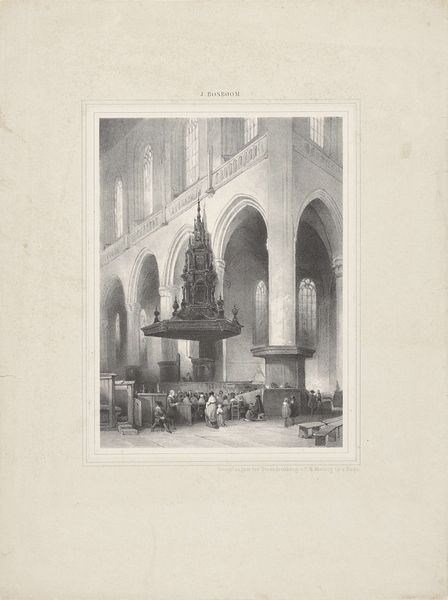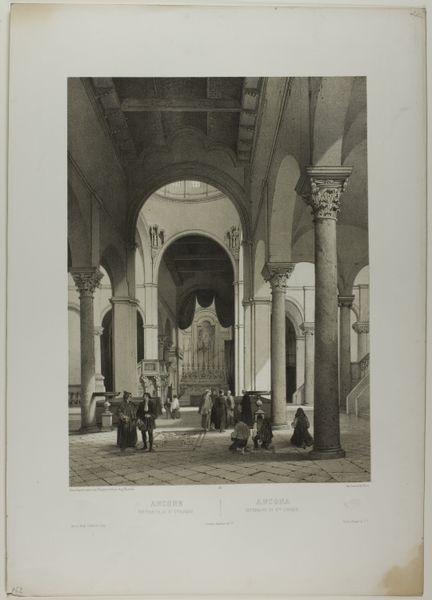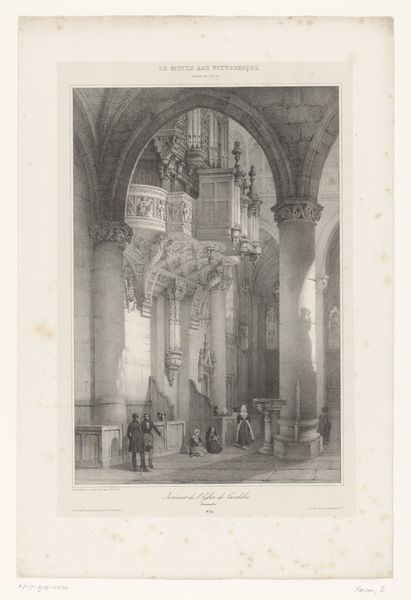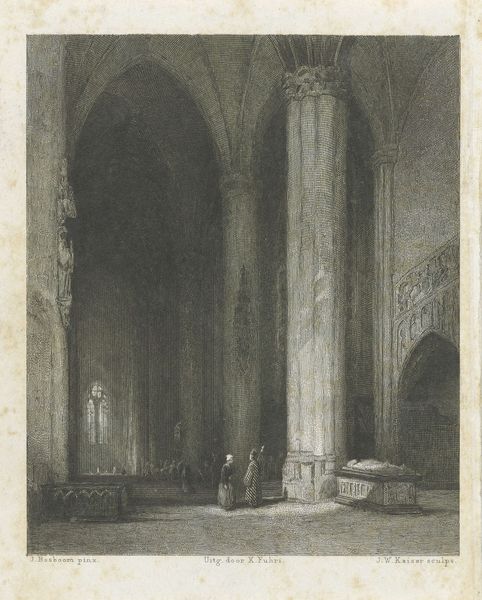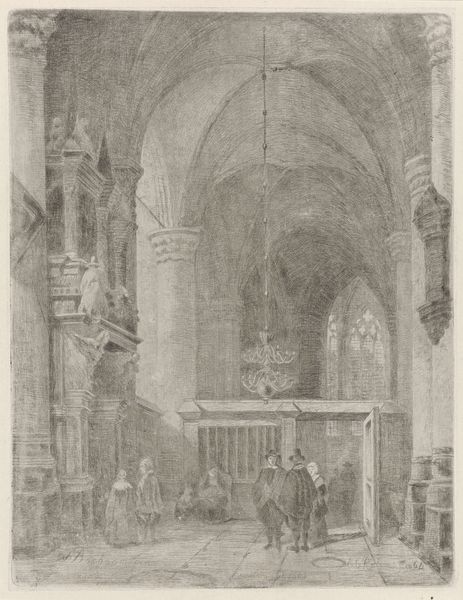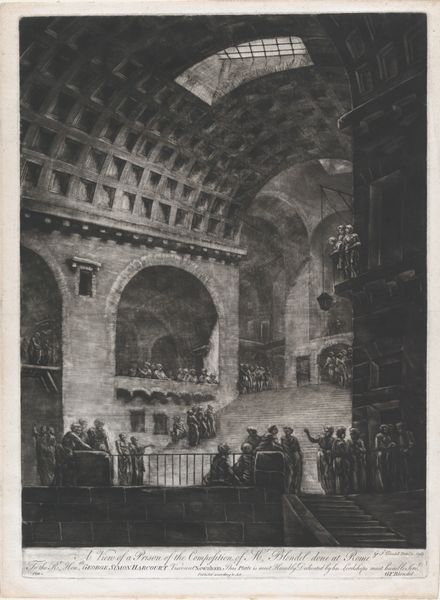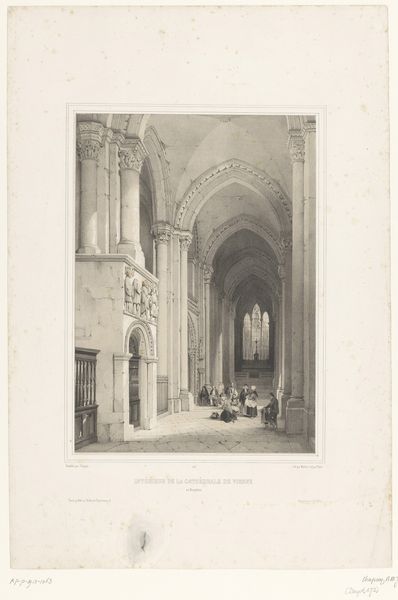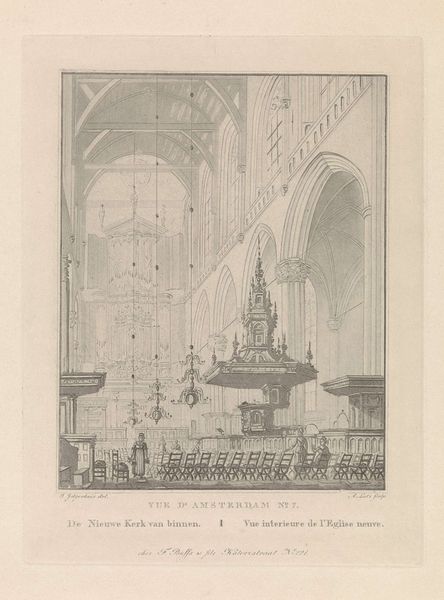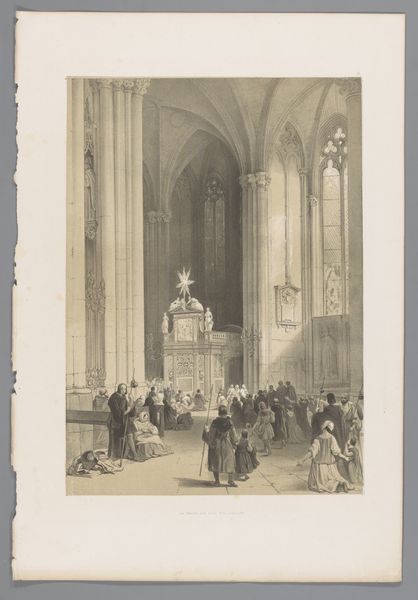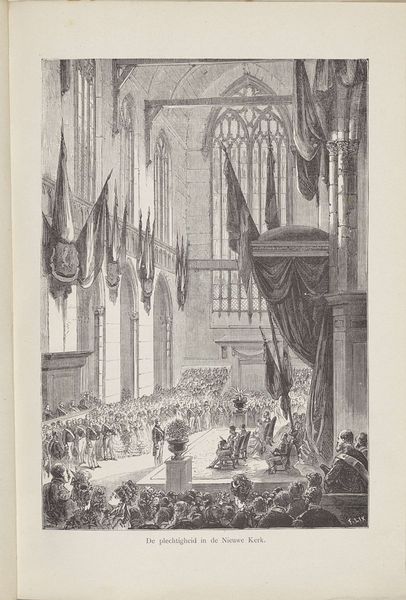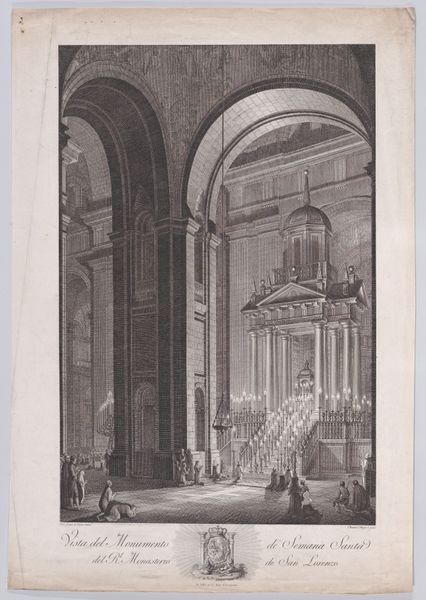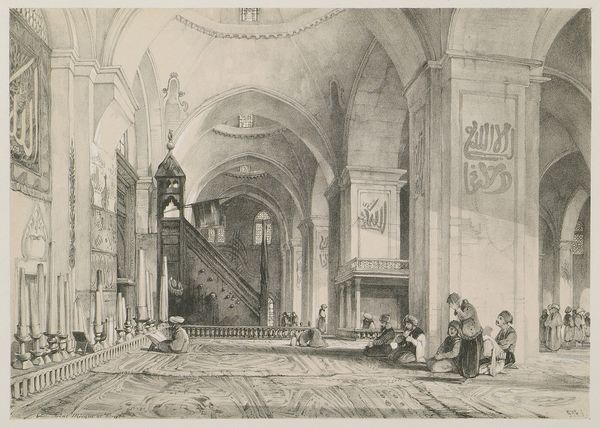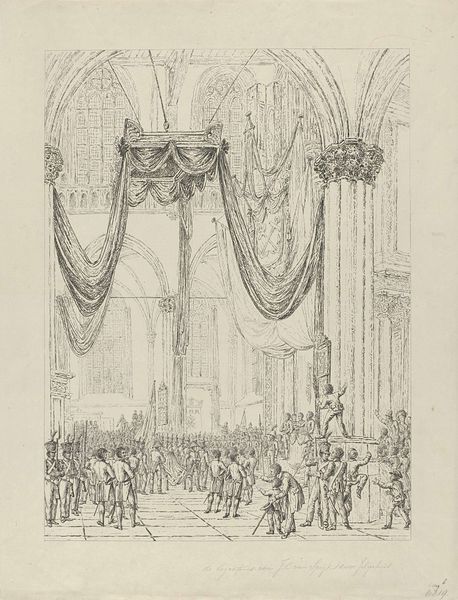
print, engraving
# print
#
landscape
#
romanticism
#
genre-painting
#
engraving
Dimensions: height 567 mm, width 414 mm
Copyright: Rijks Museum: Open Domain
Curator: Let's turn our attention to "Begrafenis van Hortense de Beauharnais, 1837" a print created by Jean Louis Tirpenne, housed here at the Rijksmuseum. The piece captures the sombre atmosphere of a funeral service in a cathedral. What are your initial impressions? Editor: It strikes me as quite theatrical. The high vaulted ceilings and towering pulpit create an almost overwhelming sense of scale, dwarfing the figures and amplifying the solemnity of the occasion. There's a real sense of depth to the composition too, the lines draw your eye right in. Curator: Indeed. The cathedral setting immediately evokes the weighty symbolism of death, transition, and spiritual solace, which are of course perennial themes within human existence. The romantic style reinforces an emphasis on raw emotion. It presents death as an overwhelming feeling, but tempered through the visual order inherent in the carefully constructed lines. Editor: Are there particular figures that stand out to you? There appear to be several uniforms of significance. The kneeling woman draped at the foot of the procession draws the eye due to how hunched and covered they are, but it's the uniforms that truly fascinate. Curator: Certainly. The procession, while small, is richly symbolic. Hortense de Beauharnais was Queen Consort of Holland. And, of course, also the stepdaughter of Napoleon I. Those present surely would have known this reality and been aware of the changing political landscapes around their grief. I notice a tension in the lines, representing conflicting political and private emotions in that space. What do you think Tirpenne may have wanted to express to the viewers in his art? Editor: Well, the fact that the cathedral's structure nearly dominates the crowd suggests, perhaps, the permanence and unwavering nature of institutions versus the fleeting nature of individual life. The composition creates a dialectic tension between transience and immanence. The use of light and shadow amplifies that sense of drama, highlighting the figures while simultaneously casting them in a melancholic pallor. A lot of emotion in something captured through black lines and tonal grayscales. Curator: Indeed. Considering Tirpenne's choices with composition and use of line, he truly crafted an evocative visual space that emphasizes not only death, but what may follow beyond the funeral proceedings. Editor: Precisely. Thank you, a rather fruitful perspective.
Comments
No comments
Be the first to comment and join the conversation on the ultimate creative platform.
